Latin name: Calibrachoa
Category: nightshade shrubs, rarely annual herbs
Origin: South America
Calibrochoa - a luxurious flower
Calibrochoa is a bright ornamental flowering plant with many bluebell flowers. Flowers with falling shoots in flowerpots placed on a balcony, loggia or veranda look very charming. Beautiful plants with abundant flowering gracefully embellish home gardens, landscape design. The advantage of flowers is their unpretentiousness, which does not require special conditions for growing.
Creating a beautiful phytodesign of personal plots, as well as premises, it is possible to do it with the help of ampelous flowers of caliberochoa. Culture in natural conditions - perennial with creeping shoots, grows in Uruguay, Argentina, Brazil. South America is the most common habitat for flowers. It also grows in regions of Mexico with caliber-botanical varieties. Natural wild crops contain distinctive characteristics - only a perennial and a shade of purple flowers.
Cultivars of the plant - annual ampelous garden flowers, contain a variety of varietal forms. There are eighteen varieties today, differing from each other in the petals of the corolla.
In appearance, caliobrachoa resembles a petunia, but these flowers still have a difference. Thus, the stems of the caliber plant become woody and branch, forming very oblong shoots, some of which reach two meters. The next difference in colors is that the foliage of caliberchoa is much smaller in length from 3 to 4 cm and 1 cm in width, contain a lanceolate form. Also a distinctive feature of calibrachoa is the content of a yellow pharynx and neck.
The stems of the ampelous caliberhoa descend, growing in a pot, and those plants that grow in open ground cover the soil. The tops of the stems are used to preserve the plant in winter. Dense green leaves outshine flowers during lush flowering.
The growth activity of the plant manifests itself in the summer, small flowers are formed in diameter from 3 to 4 cm. The petals are connected into a tube, due to which small buds are formed that resemble the appearance of bells. Buds of cultivated plants purple, brown, pink. red, yellow, white and blue.
At the moment, hybrid pethoa plants have been created, petunias and caliberhoa served as the foundation for their creation.
Calibrachoa belongs to the nightshade family as well as pepino, cyphomandra, petunia, fragrant tobacco, capsicum, carniolian scopolia.
Calibrachoa varieties
The most popular plant varieties are:
Kambul is a group of varieties for growing in open ground and on balconies. Annual plants form bushes in height from 25 to 35 cm. Shoots grow about one meter. The plant contains white, pink, blue, red or yellow buds.
A million bells (Million Bells)
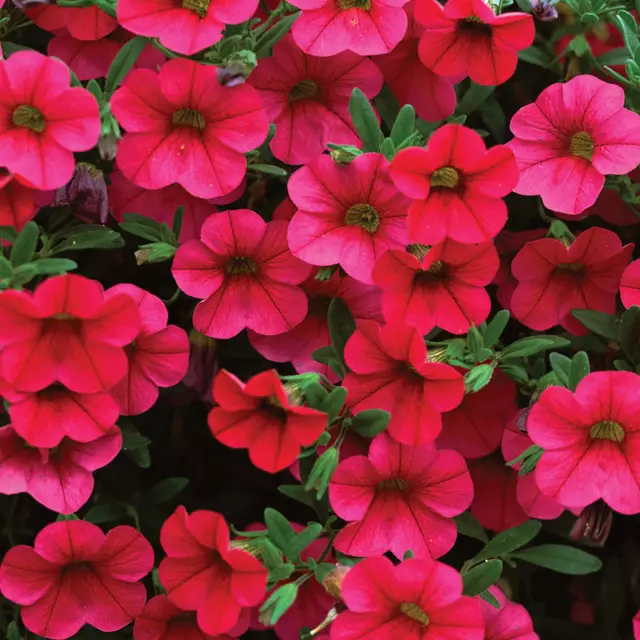 An interesting name belongs to a group of varieties due to the fact that the flowers of caliberochoa contain the appearance of bells. There are flowers with a fragrant smell similar to the smell of fruits. The bushes contain long hanging shoots about one and a half meters long. They are abundantly strewn with small flowers. Of the nightshade family, this group is endowed with the most lush flowering.
An interesting name belongs to a group of varieties due to the fact that the flowers of caliberochoa contain the appearance of bells. There are flowers with a fragrant smell similar to the smell of fruits. The bushes contain long hanging shoots about one and a half meters long. They are abundantly strewn with small flowers. Of the nightshade family, this group is endowed with the most lush flowering.
Double and Compact Double
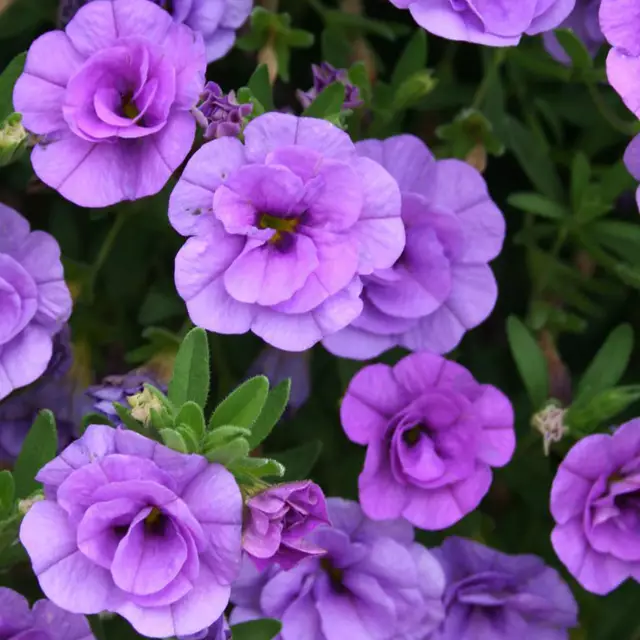 A distinctive feature of various varieties is less abundant flowering. However, the picturesque buds have many petals. Varieties are terry and densely double.
A distinctive feature of various varieties is less abundant flowering. However, the picturesque buds have many petals. Varieties are terry and densely double.
Excellent hybrid plants containing double flowers:
Double Pink Star (Double Pink Star)
The plant has pink flowers, which are distinguished by the fact that the appearance of the first buds occurs in the seedling period. Throughout the season, the plants delight with good growth and bloom magnificently.
Kalita Double Orange (Calita Double Orange)
The plant is a very charming hybrid. Orange flowers - look spectacular with a lot of red veins.
Calibri Double Violet (Colibri Double Violet)
Plants with purple double flowers. These plants are semi-ampel caliberchoa. Bushes grow spherical in diameter from 20 to 30 cm.
Mini Famous Uno Double Orange Flame (Mini Famous Uno Double Orange Flame)
Hanging planters are great for plants, as they are small with a unique flower appearance. The hybrid contains a corolla short and slightly rumpled. The shade of the corolla is red-yellow, reminiscent of the flames of a fire.
Calibrachoa: home care
Let's take a closer look…
Site selection and lighting
The ideal place for growing a plant belongs to balconies or verandas protected from windy weather.
Sunshine is needed for lush flowering.
A short rain and not a strong wind will not harm due to a strong stem. Significant wind and heavy rain can break the shoots and spoil the graceful flowers. As a result of which in bad weather, flowers must be placed at home or protected by covering.
Watering
The plant is unacceptable waterlogging of the soil. Watering should be done at the very root when the soil dries out. It is advisable to use water heated in the sun. In summer, when it is hot, it is necessary to do watering three times during the day. The soil during watering needs to be moist, not wet.
Flowers adore daily spraying, which is allowed three times a day. Spraying is recommended in such a way that a fine spray is obtained and at the same time not to allow the formation of large drops of water on the plant.
The soil
The ideal soil for calibrachoa is universal or bio soil. To create a luxurious bush, drainage is necessary, you can use gravel or expanded clay, we settle it in a layer thickness of 5 cm.
When choosing a flowerpot, you need to remember that one plant requires 3-4 liters of land.
Rest period
Calibrachoa is a perennial, but it is bred as an annual, due to the fact that in the second year the flowering is less lush. When autumn comes, the bush is not dug up, it should simply be left to winter so that it is possible to cut the cuttings at the right time for this.
Plants are placed in autumn in a room with a temperature of 5-10℃. During the dormant period, high humidity should be maintained and moderate watering. The plant should not be fed.
Top dressing
Calibrachoa should be fed once a week with organic or mineral fertilizer, changing them periodically.
In order to have a lush flowering, it is necessary to feed the plant with fertilizers with phosphorus, potassium, nitrogen. If growth has stopped, a growth stimulator should be added.
Bush formation
The flowers of the plant last for about seven days. Withered flowers need to be cut off, thanks to this action, new buds will be laid. The necessary pruning and pinching for active branching, and this also contributes to abundant flowering.
Reproduction
The plant propagates by cuttings. They need to create a temperature of 21-24℃, lighting in winter.
Rules for propagation by cuttings:
- Cut cuttings with 4 or 6 leaves, then leave only the top two leaves.
- We plant the cuttings immediately, just cut, deepen about a quarter in length, make a distance of about 2 cm from each other.
- We place the seedlings in the formed greenhouse.
- Spray regularly.
- We maintain the temperature regime within 21-24℃.
- We do not allow waterlogging of the soil.
- We transplant seedlings separately after two weeks.
- We pinch the top of the shoots, thereby providing better branching.
- We transplant plants into flowerpots for constant growth after 45 days.
Calibrachoa pests
The plant is attacked by pests such as aphids, spider mites, thrips.
To control pests, insecticides are used: Aktara, Actellik, Sunmayt. Apply insecticides to destroy the spider mite should be two, three times with an interval of seven days.
Calibrachoa diseases
The plant is susceptible to such diseases with inappropriate care:
Black leg, it is determined by such signs, the basal part of the stems softens and darkens. The cause of this disease is often planted plants, heavy and waterlogged soil. To rid the plant of the disease, the infected shoots should be removed along with the ground, and the rest should be treated with fungicides and observe moderate watering.
Powdery mildew appears as a white coating on flowers and leaves. The reason for its occurrence is the humidity of the air during the hot season, sharp temperature fluctuations. To help the plant, the affected areas should be removed, and the rest should be treated with sulfur.
Chlorosis is determined by the fact that the foliage becomes yellow and the plant rarely blooms. The cause of the disease is a large amount of calcium and an insufficient amount of iron in the soil, excessive watering. To save the plant from the disease, you should feed it with a fertilizer that includes iron and adjust the correct watering.
Difficult moments when growing caliberchoa:
- Foliage turns yellow at low temperatures, excessive watering and lack of iron in the soil.
- Twisting foliage in dry air and poor lighting.
- Lower foliage turns yellow when waterlogged, lack of nitrogen in the soil, a small amount of land.
Give a little caring love, which will make the plant delight with a flowery waterfall, strewn with many miniature bells.
Good luck growing beautiful caliberchoa flowers!




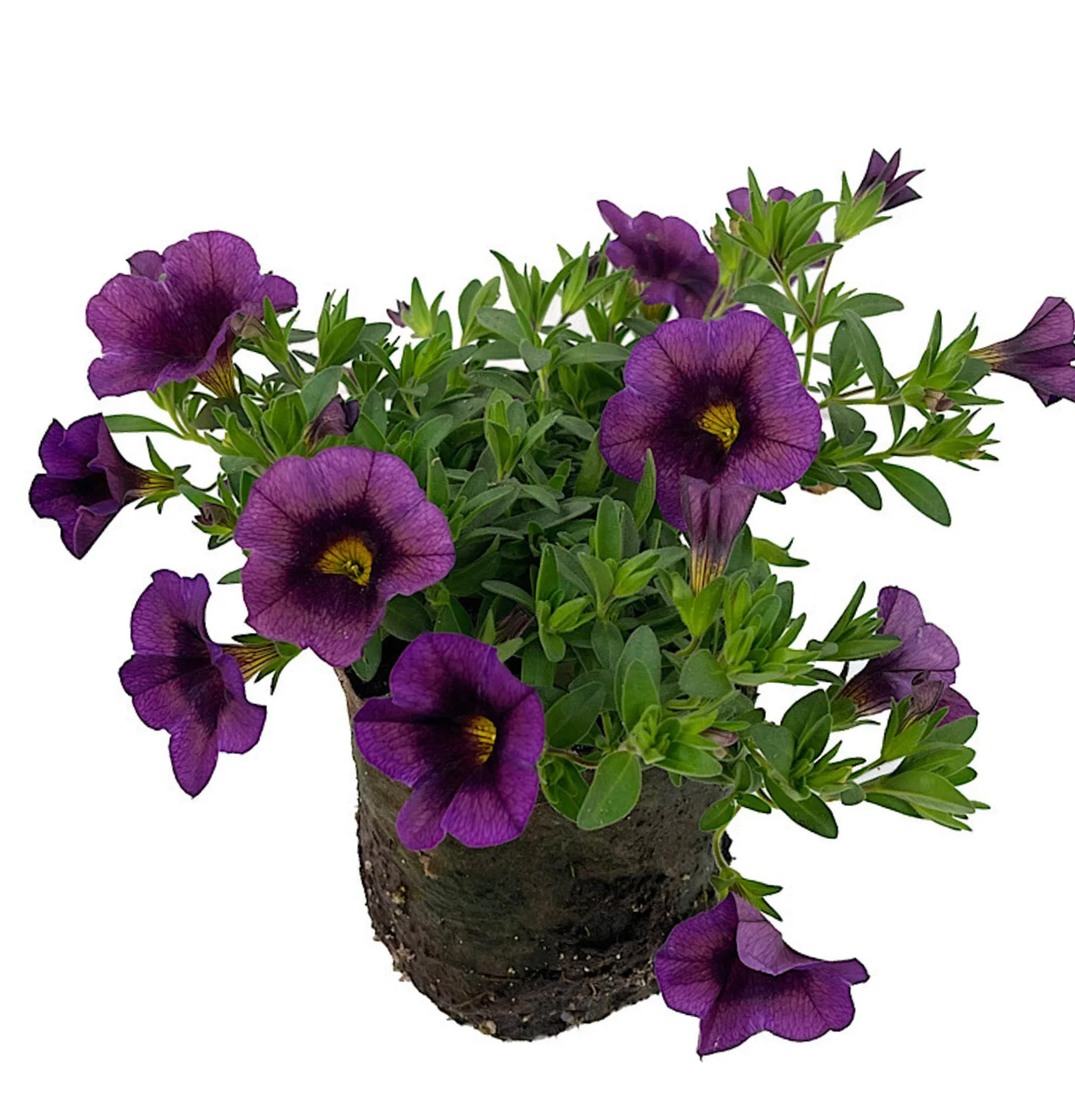










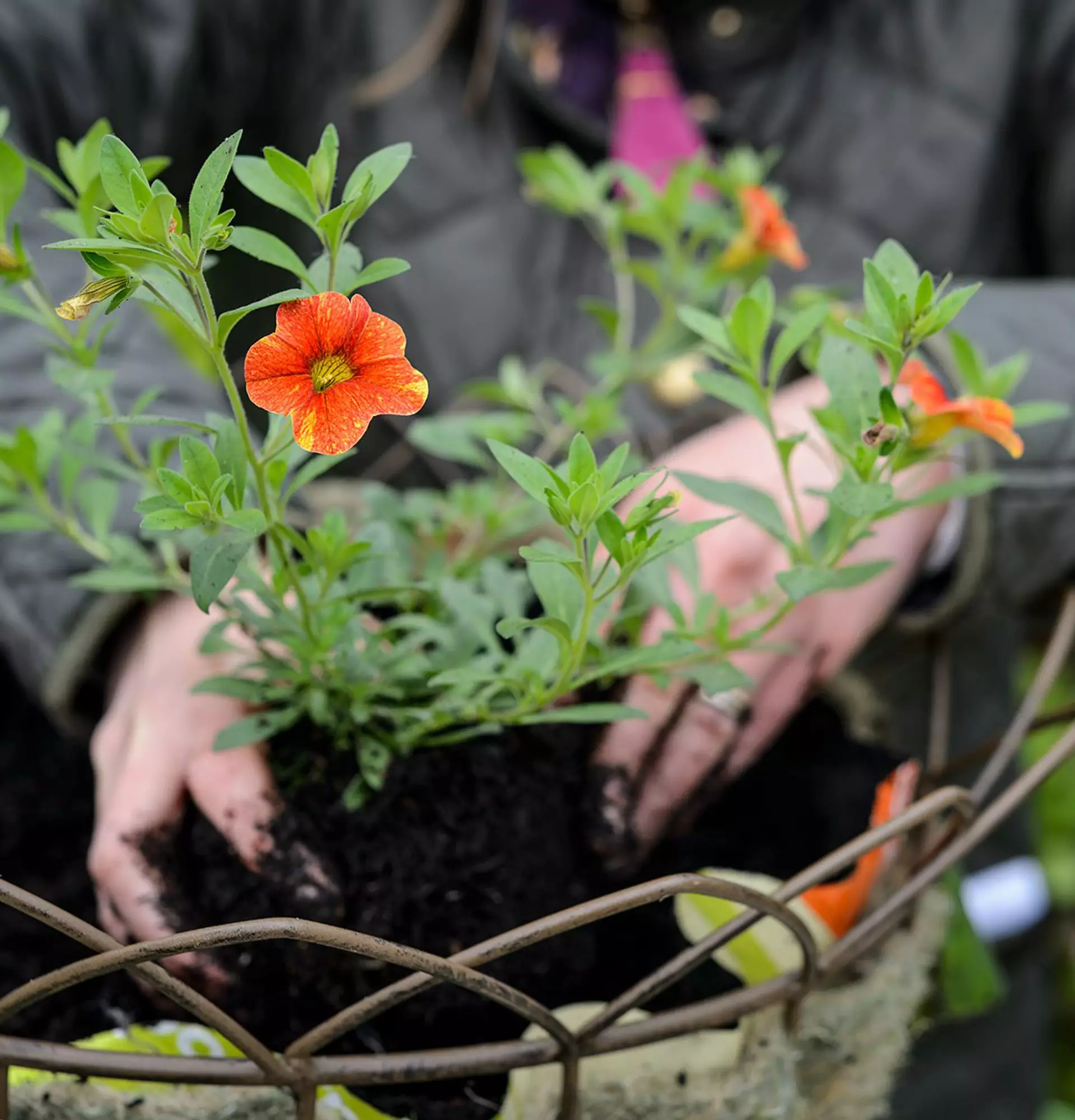
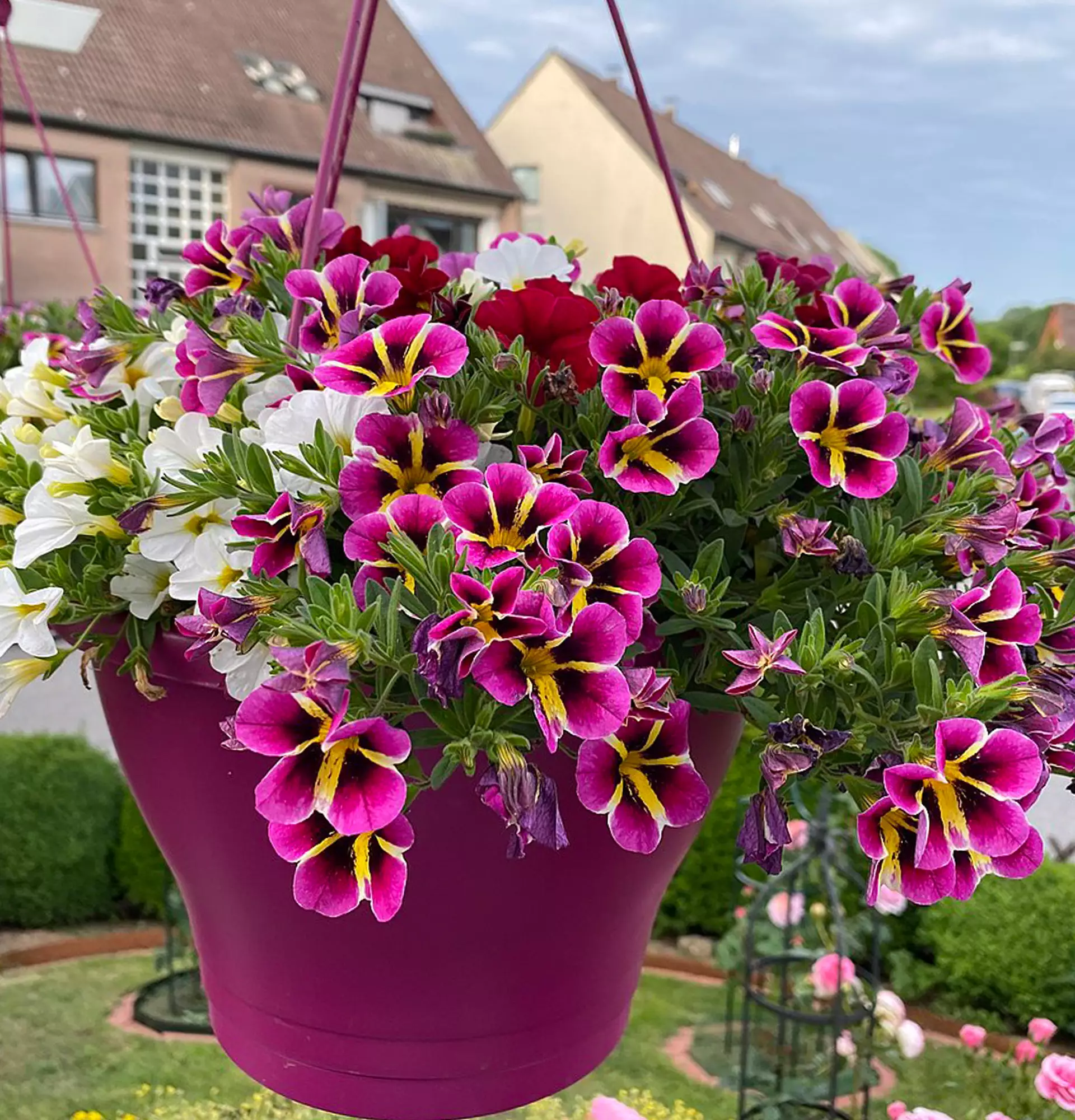
Write comments
Comments